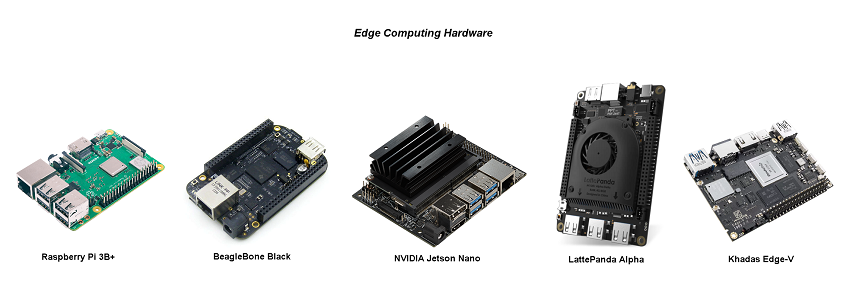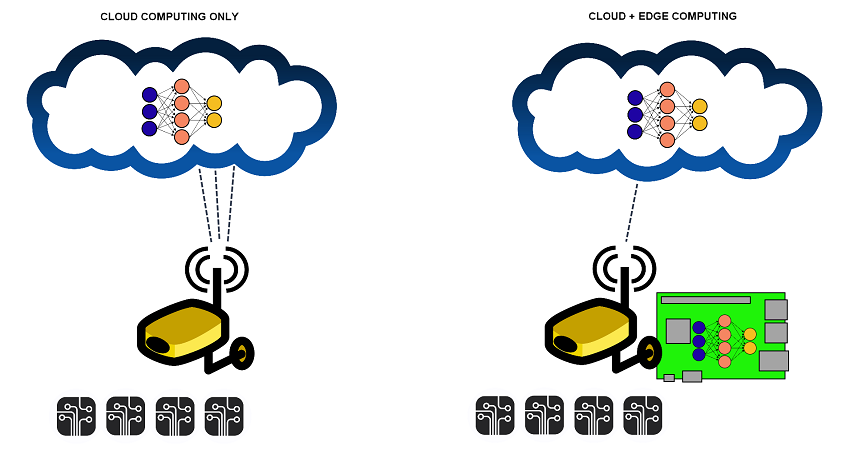“Edge computing places networked computing resources as close as possible to where data is created."
 Zach Netsov
Zach NetsovProduct Specialist,
Contemporary Controls
Contributing Editor
|
November 2019 |
[an error occurred while processing this directive] |
| Edge
Computing Explained “Edge computing places networked computing resources as close as possible to where data is created." |
 Zach Netsov Zach NetsovProduct Specialist, Contemporary Controls Contributing Editor |
| Articles |
| Interviews |
| Releases |
| New Products |
| Reviews |
| [an error occurred while processing this directive] |
| Editorial |
| Events |
| Sponsors |
| Site Search |
| Newsletters |
| [an error occurred while processing this directive] |
| Archives |
| Past Issues |
| Home |
| Editors |
| eDucation |
| [an error occurred while processing this directive] |
| Training |
| Links |
| Software |
| Subscribe |
| [an error occurred while processing this directive] |
IBM’s
edge computing definition: “Edge
computing places networked computing resources as close as possible to
where data is created. Edge computing is an important emerging paradigm
that can expand your operating model by virtualizing your cloud beyond
a data center or cloud computing center. Edge computing moves
application workloads from a centralized location to remote locations.”
The advancement in embedded hardware performance
over the past few years is one of the main factors which has enabled
the rise of edge computing. Edge Computing is strongly associated with
cloud computing, IoT, and the application of small but powerful
embedded computing platforms such as SBCs (single board computers).
Even though edge computing hardware is defined by its location, and not
its size, small but powerful platforms make for more convenient
installations in a wider range of applications with lower power
consumption.

To understand computing on the network edge, we
need to reflect on the rise of cloud computing and IoT as these topics
are very much correlated. In recent years, cloud computing has become
one of the biggest digital trends, and mainly involves the delivery of
powerful computing resources to remote devices connected over the
Internet. We now see that increasingly, more devices accessing cloud
services are IoT appliances that transmit data online for
processing/analysis in the cloud. Connecting IoT appliances such as
cameras, HVAC equipment, or other building and process automation
equipment to the cloud facilitates the creation of smart buildings,
smart homes, smart factories, and smart cities. However, transmitting
an increasing volume of data for remote, centralized processing is
becoming problematic with the rapid rise of IoT. High data transmission
to cloud-based services can pose a load on available network capacity,
cause latency, resulting in a slow speed of response, and increase
cloud computing costs dramatically. These are some of the main drivers
for the rise of edge computing.
Edge computing allows devices that would have
relied on the cloud entirely, to process some of their own data
locally. For example, a networked camera may now perform local data
processing for visual recognition and respond accordingly, instead of
sending data it had captured to the cloud, waiting on the data to be
processed in the cloud, and receiving the processed response back from
the cloud. Eliminating this dependency on the cloud and performing
local data processing improves latency (the time is taken to generate a
response from a data input), as well as reducing the cost and
requirement for mass data transmissions associated with all cloud
services. Edge computing mitigates latency and bandwidth constraints in
new classes of IoT applications by shortening distances between devices
and the cloud services they require, as well as reducing network hops.
Edge computing is important due to the growing demand for faster
responses from AI services, the constant rise of IoT applications, and
the increasing pressure on network capacity. As we enter the next step
in digital evolution and increasingly utilize artificial intelligence
services for optimization of building and process automation equipment
in creating smart buildings and smart cities, data processing at the
edge will become even more critical.
Consider a neural network algorithm. Neural
network algorithms are very powerful once trained, but training them
requires processing large data sets (the more data fed to the neural
net, the more intelligent it will be), and very powerful hardware to
execute the training in a timely manner. Training could take weeks on
powerful computers depending on the complexity and size of training
data. Today, Amazon (Machine Learning on AWS), Microsoft (Azure
Cognitive Services), Google (Cloud AI Hub), and IBM (Watson) all offer
cloud-based voice recognition, vision recognition, and other AI
services that can receive data such as a still image, voice or video
feed, and return a cognitive response. These cloud AI services rely on
neural networks that have been pre-trained on extremely powerful data
center servers. When an input (data) is received, the powerful data
center (cloud) servers perform inference to determine what the
connected device is looking at. Alternatively, in an edge computing
scenario, a neural network is still trained on a data center server, as
training requires a lot of computational power, but the algorithm can
then be distributed to remote computing devices at the edge.

[an error occurred while processing this directive]For example, a neural network algorithm
used in a factory manufacturing PCB (printed circuit board) electronics
would be shown image examples of correctly produced printed circuit
boards and then examples of defective printed circuit boards, so that
it can learn to distinguish between the two. However, once training of
the neural net is complete, a copy of the neural network algorithm is
deployed to connected edge computing hardware, therefore distributing
the load and shortening the path to intelligence. This allows the edge
device to make cognitive decisions on its own and identify defective
printed circuit boards without transmitting any video data to the cloud
servers. Latency is therefore greatly improved, and the bandwidth
demands on the network are decreased, as data only has to be reported
back to the cloud when defective printed circuit boards are identified
in order to further train and improve the neural network algorithm.
This scenario of training a neural network centrally and deploying
copies for execution at the edge has amazing potential.
In the building automation space,
next-generation analytics software using cloud-based AI to predict and
diagnose issues without any human interference (requiring robust data
sets and sophisticated neural net algorithms) will soon be a reality.
Edge hardware can be useful in any scenario where the roll-out of local
computing power at the extremities of a network can reduce reliance on
the cloud. This becomes very important in mission-critical systems, or
in systems which cannot always be connected to the cloud reliably.
About the Author
Professional Information
Zach Netsov is a Product Specialist at
Contemporary Controls focused on the BASautomation line of products
which provide solutions for both small and scalable building
management. He received his BSEE from DeVry University with a
concentration in renewable energy. At Contemporary Controls, Zach is
part of the team that championed the design and creation of a BASpi I/O
board for Raspberry Pi.
[an error occurred while processing this directive]
[Click Banner To Learn More]
[Home Page] [The Automator] [About] [Subscribe ] [Contact Us]